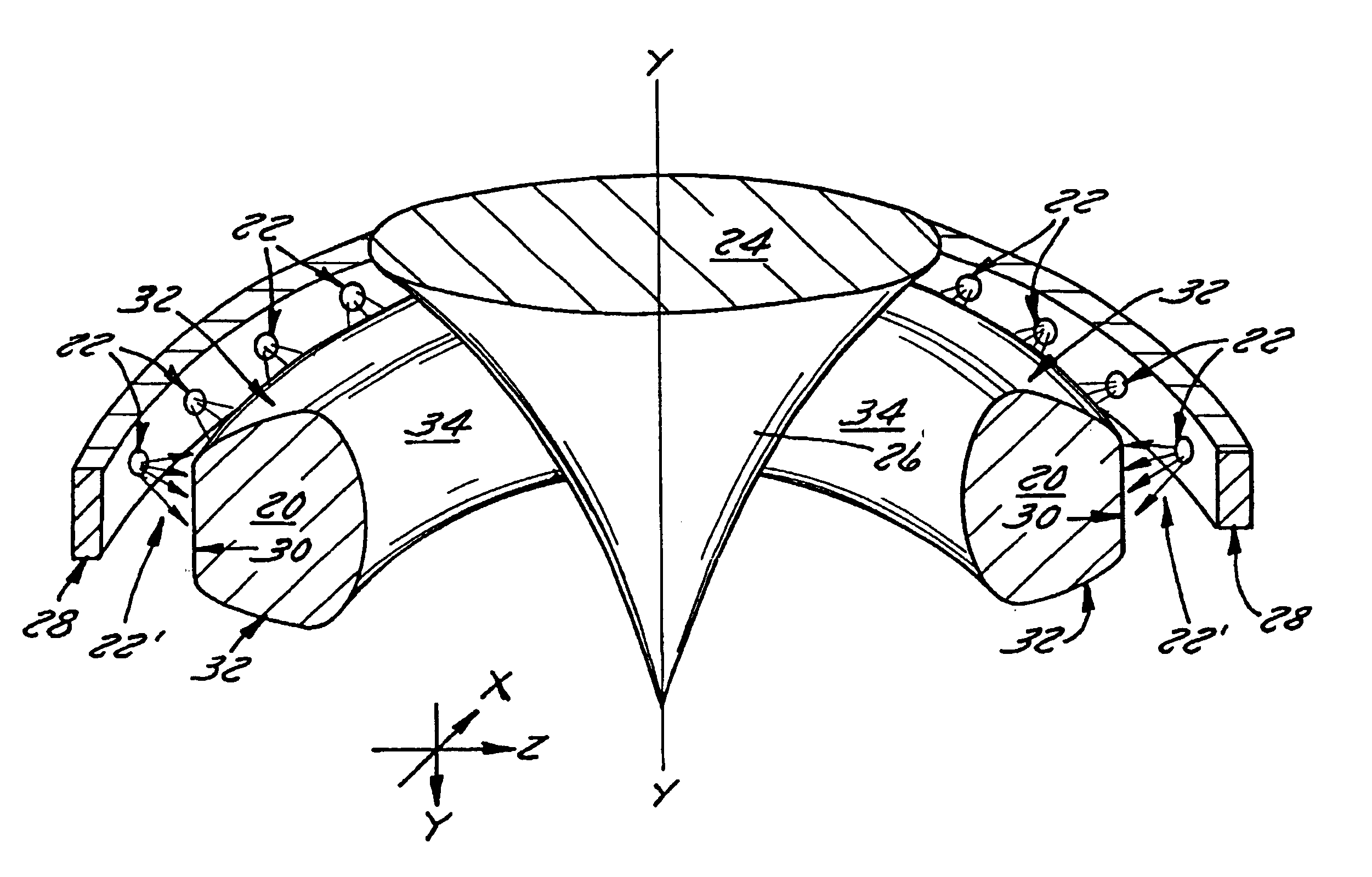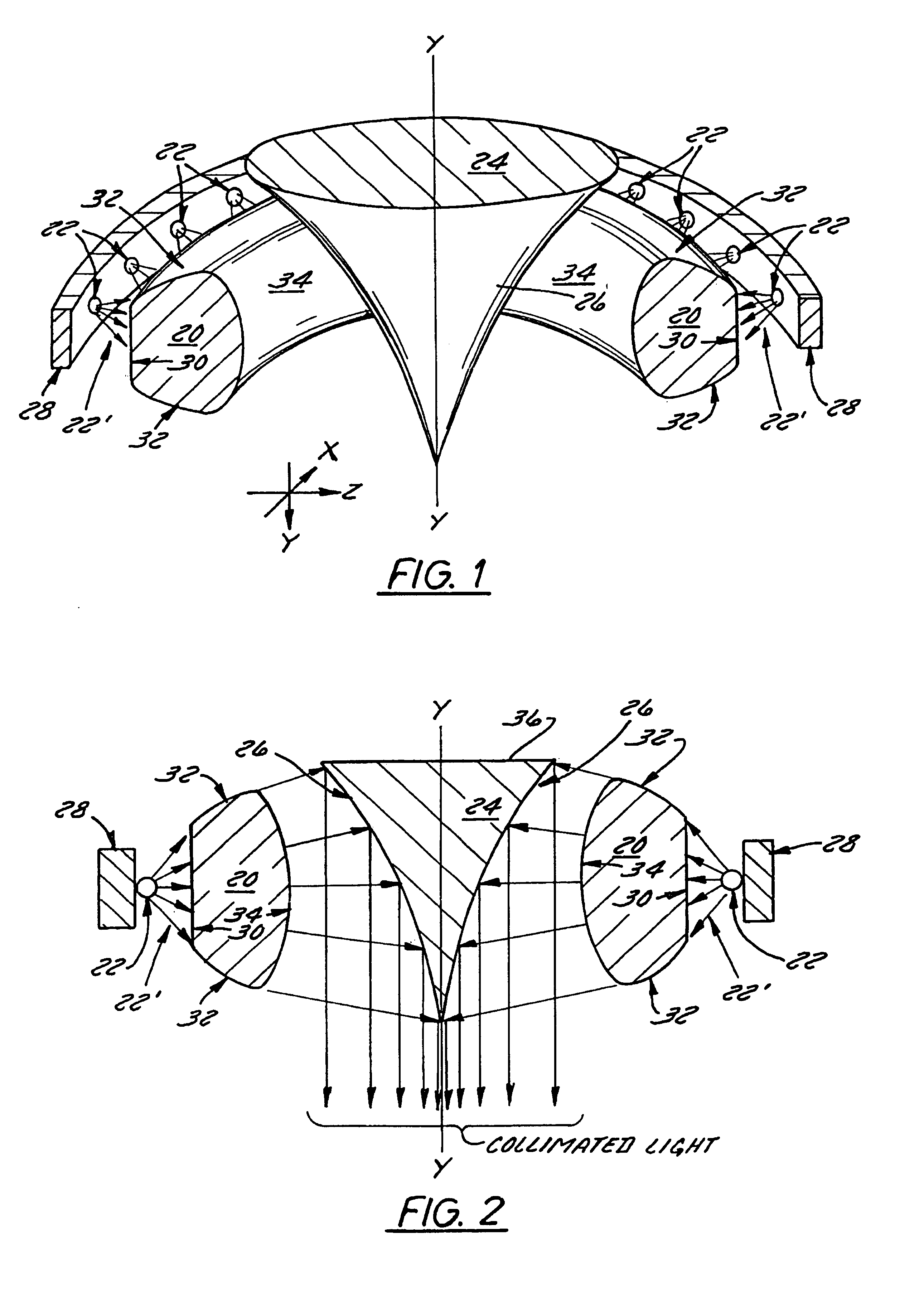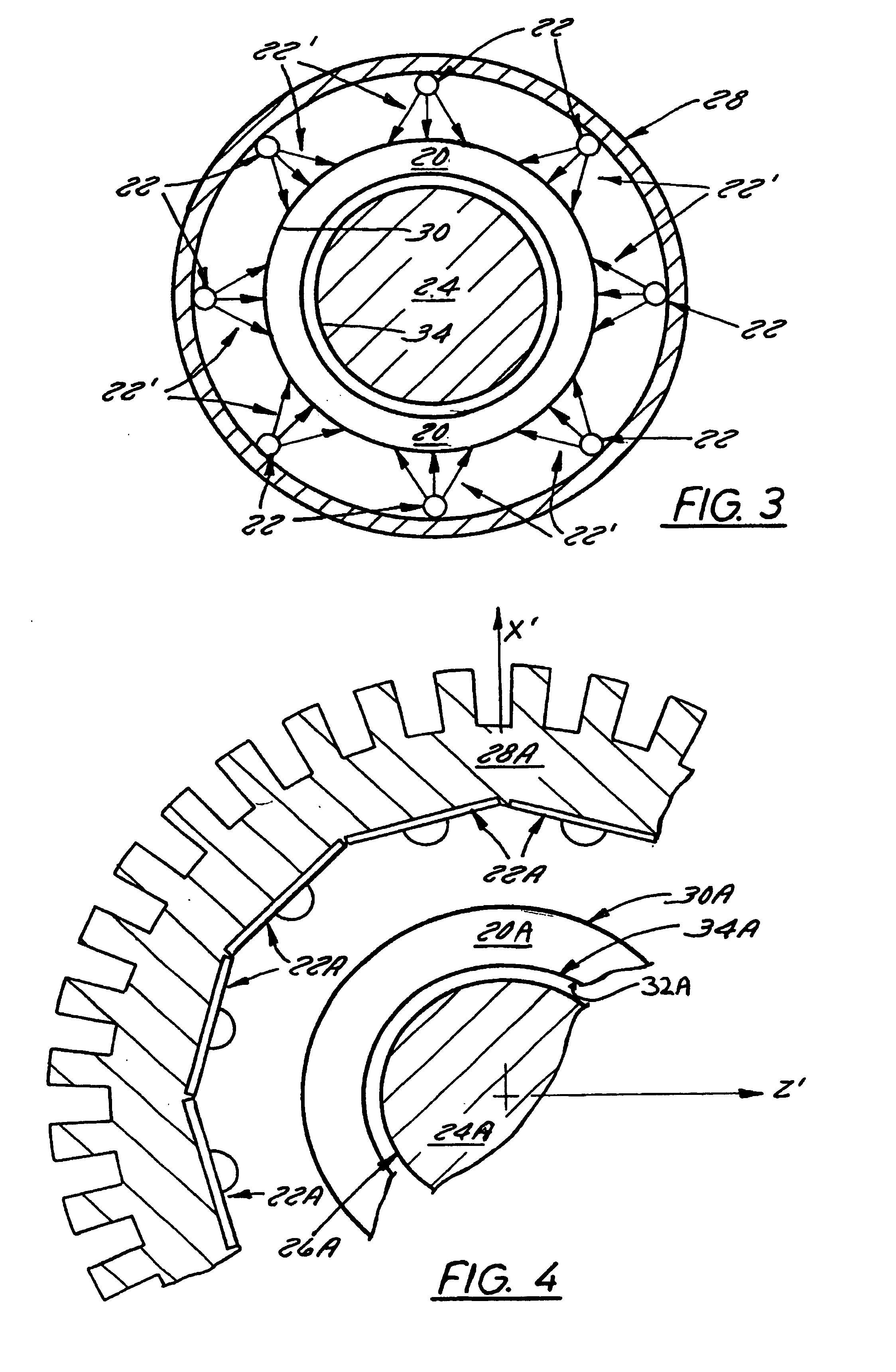Multiple source collimated beam luminaire
a collimated beam and light source technology, applied in the direction of lighting applications, light source combinations, ways, etc., can solve the problems of high cost, large volume, unsuitable for mass production, etc., and achieve the effect of simple operation and electrical efficiency
- Summary
- Abstract
- Description
- Claims
- Application Information
AI Technical Summary
Benefits of technology
Problems solved by technology
Method used
Image
Examples
first embodiment
[0040]It is well known that, in general, LEDs emit a highly divergent beam. The quasi-toroidal light transforming collector 20A is therefore designed to compensate for this divergency and to transform light output from the LEDs into a more usable spatial distribution prior to being reflected by curved conical collimating combiner 24A. Further in this regard, FIG. 4A shows another embodiment of the present invention in which the quasi-toroidal light transforming collector 20A comprises a number of concentric quasi-toroidal components 201, 202 and 203 fabricated from material with different indices of refraction. Each component in this embodiment is disposed close to the axis Y′—Y′ and has an index of refraction higher than the adjacent one. Specifically, external component 201 has the lowest index of refraction and internal component 203 has the highest index of refraction of these components. Those skilled in the art of optics will understand that each component will operate as a cy...
second embodiment
[0041]It is also known, that in general LEDs generate heat. Further in that regard, LED performance and longevity is thus dependent upon the removal of such LED-generated heat and therefore, the luminaire of the second embodiment preferably includes an effective amount of heat-transfer surface area. In this regard, the light source support structure 28A (FIG. 4) may be made of a suitable durable heat-transmissive material such as stainless steel or aluminum, which has sufficient mass and surface area to provide satisfactory “heat-sink” properties, as may be desired.
[0042]Next referring to FIG. 5, another embodiment of the present invention is shown to comprise a quasi-toroidal light transforming collector 20B, a curved conical collimating combiner 24B, a light source support structure 28B, and a plurality of light sources 22B, each light source comprising a combination of red, green, and blue light emitting diodes connected to an R, G, B-controlled power supply. As is seen, there ar...
PUM
 Login to View More
Login to View More Abstract
Description
Claims
Application Information
 Login to View More
Login to View More - R&D
- Intellectual Property
- Life Sciences
- Materials
- Tech Scout
- Unparalleled Data Quality
- Higher Quality Content
- 60% Fewer Hallucinations
Browse by: Latest US Patents, China's latest patents, Technical Efficacy Thesaurus, Application Domain, Technology Topic, Popular Technical Reports.
© 2025 PatSnap. All rights reserved.Legal|Privacy policy|Modern Slavery Act Transparency Statement|Sitemap|About US| Contact US: help@patsnap.com



